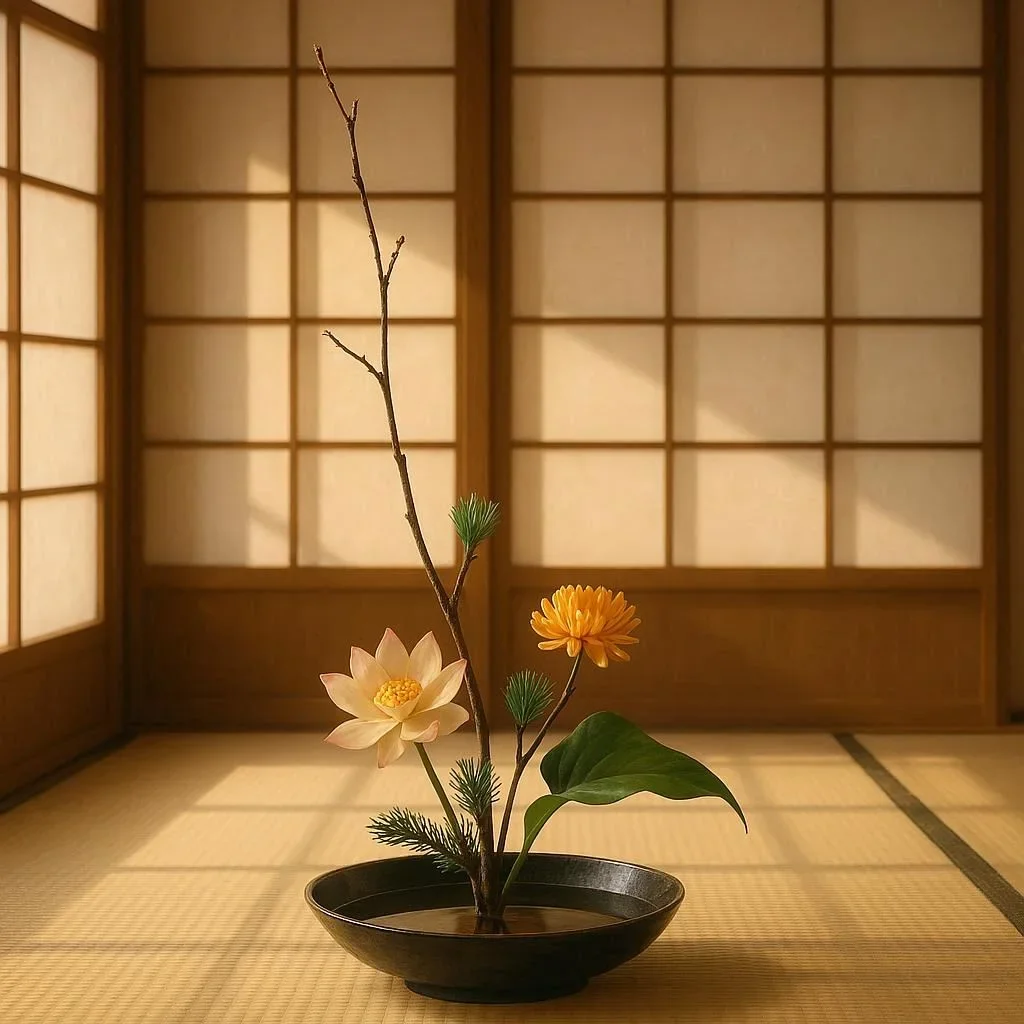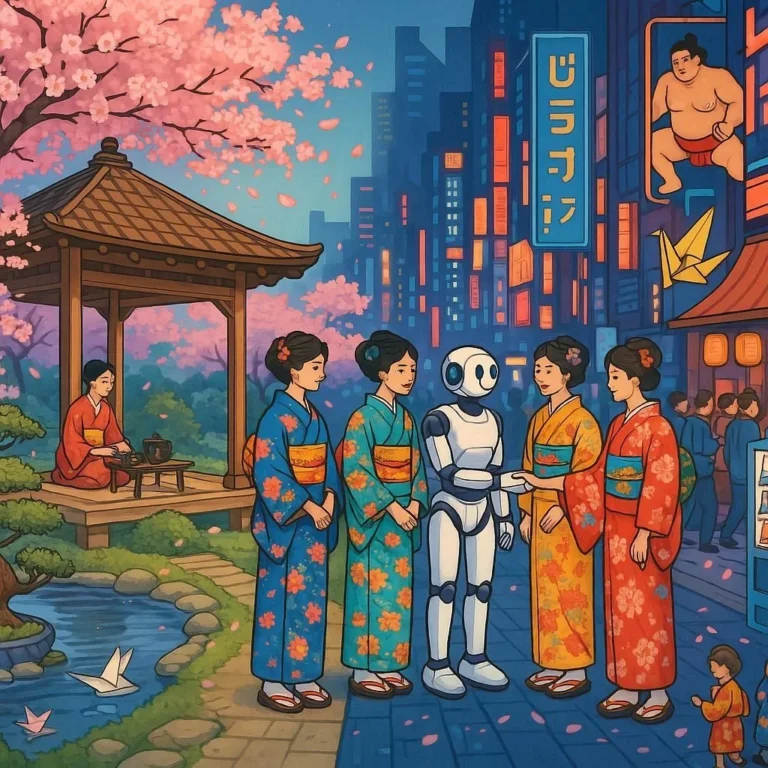508 views The Role of Shinto Shrines in Modern Japan
Shinto shrines, with their iconic torii gates and serene torii‑lined paths, are instantly recognisable as symbols of Japan’s cultural heritage. Yet, beyond their picturesque appearance, they serve intricate functions in contemporary life. In this deep dive, we explore how Shinto shrines continue to influence modern society—from preserving spiritual identity and fostering community cohesion, to guiding business ethics, shaping tourism, and acting as bulwark against the erosion of tradition in a globalized world.
1. Spiritual Identity in an Secular Age
1.1 Shrines as Personal Spiritual Anchors
While Japan’s population has become increasingly secular, about 70 % of Japanese people identify with Shinto spirituality in one form or another. When someone asks if they are Christian, Buddhist, or Shinto, the most common answer is “I don’t belong to any religion, but I visit shrines on important occasions.”
Shrines offer a spiritual roadmap that is less dogmatic than institutional religion. People consult shrines for:
- Blessings before a big life event – childbirth, marriage, graduation, job interviews.
- Coma‑and‑family prayers – For students to succeed, for companies to prosper, for farmers to bear heavy harvests.
- Guidance during clear‑cut demarcations – Such as withdrawing from social media or traveling abroad.
Through these rituals, Shinto shrines provide an individualized, flexible framework that loads the spiritual beats of daily life—without the requirement of constant attendance.
1.2 Symbolic Presence in Modern Spaces
Until the late 20th century, Shinto shrines tended to be located near temples or in rural hamlets. Today, shrines are found nearby stadiums, business centers, and even malls, reinforcing Shinto’s relevance. A travelers’ guide to Tokyo will show you the Tsukiji Hongan‑ji shrine housed in an office block – a symbolic layering that resonates with urban commuters.
These skylight‑shrine integrations keep Shinto imprinted in the collective consciousness, reminding even the most “non‑religious” citizens of the sacred, cyclical threads that shape daily routines.
2. Community Cohesion and Social Life
2.1 Festivals (Matsuri) as Cultural Glue
One of the most visible societal functions of Shinto shrines is the organization of annual matsuri, such as the Sanno Festival in Tokyo or the Kanda Matsuri in the capital. These festivals:
- Bring together disparate communities – Workers, students, tourists, and business leaders mingle.
- Reinforce local identities – A shrine’s unique charm becomes a point of pride.
- Create economic activity – Food stalls, vendors, and performances spark tiny micro‑economies.
Alfred Anthropology suggests that [matsuri] are “ritual marketplaces.” In modern Japan, shrine festivals occasionally double as urban informal markets, revitalizing subway station surroundings during off‑peak hours.
2.2 Social Safety Nets
Contrary to popular belief, many small shrines run social aid programmes that include:
- Disaster Relief – In November 2011, a Los Angeles‑based Shinto community distributed self‑defense kits during wildfires.
- Support for the Elderly – Local shrines partner with senior social clubs to provide counselling and day‑care visits.
- Mental‑Health Workshops – Oni‑e (spiritual counseling) sessions address anxiety and depression.
These initiatives illustrate how shrines bridge the gap between traditional spirituality and contemporary social welfare, acting as a “layered organ” that supports mental, emotional, and financial well‑being.
3. Guiding Corporate Culture and Business Practices
3.1 The Sacred‑Business Nexus
Many Japanese companies hold annual shinto rites before major corporate decisions—a process known as shinto koshi or josen‑shinto.
- New‑Product Launches – A shrine’s kikko‑shō blessing to guarantee “clean output.”
- Financial Year Reports – A himmatsu ceremony that embodies communal accountability.
- CEO Retirements – A kōtei ceremony that signifies smooth transition.
These ceremonies signal to employees and shareholders that a company adheres to values beyond profit—to honesty, collective responsibility, and mutual respect.
3.2 Workplace Morale and Employee Adoption
In a workplace, visiting a shrine—perhaps on a group outing—provides a quiet moment of reflection for employees. This calm interlude can:
- Reduce stress – A 2019 survey found a 12 % drop in reported anxiety after a company‑planned shrine visit.
- Boost collaboration – Participants often discuss local stories and share memoires in a setting that undercuts rigid hierarchies.
Such events create a mitigation corridor between individual and organizational blessings, aligning modern business needs with soul‑fueling traditions.
4. Sustainable Tourism and Cultural Preservation
4.1 Shrines as Eco‑Cultural Hotspots
While Kyoto’s Kinkaku‑ji (the Golden Pavilion) and Tokyo’s Meiji Shrine are well‑known tourist magnets, many smaller shrines drive eco‑tourism. Examples include:
- Yoshino Kūrakura – tourists walk wooden pines whilst attending the shrine’s sakura‑ro festival.
- Kōyū Shrine – a pilgrimage that follows the river path, encouraging per‑move local‑food consumption.
Such shrines not only preserve biodiversity but also act as self‑sustaining tourist revenue streams, reducing the regional platform’s carbon footprint.
4.2 Digital Preservation of the Sacred
With the rise of VR pilgrimage apps, visitors can experience Mio Hachiman Shrine’s atmospheric torii gates via phone screens under their own backpacks. These applications:
- Record 3D scans of shrine architecture.
- Include audio guides in multiple languages.
- Provide AR overlays that reveal hidden shintō lore.
This digital bridge ensures shrines survive even when budgets for upkeep diminish or when natural disasters threaten original stone and wood.
5. The Shrines’ Role in National Identity and International Diplomacy
5.1 Symbolic Representation in National Approvals
National events—such as presidential elections or constitutional ballots—often feature shrine ceremonies. For instance, the Tokyo Metropolitan Government Centre’s Isshin‑kō ceremony for financing municipal works is an act of open citizenship.
This synergy between shrines and state policy shapes the moral foundation upon which public decisions rest, promoting a sense of unity amid Japan’s demographic shift to an aging population.
5.2 Cultural Diplomacy in Peaceful Global Exchanges
Japanese shrines abroad—like the Kōshō‑shrine in New York City or the Nakanoshin‑shrine in London—offer an architectural platform supporting cultural exchange.
- Inter‑faith dialogues on the grounds of a shrine encourage global mutual respect.
- Art installations incorporating tobari (shrine ropes) as interpretive tools for worldwide audiences.
These interactions showcase Japan’s belief in harmony, thereby soft‑power them via their spiritual, aesthetic designs.
6. Challenges and Future Prospects
6.1 Demographic Gaps and Shrines’ Adaptation
One major challenge is declining participation—particularly in rural areas where younger residents relocate to the city. This demographic shift reduces the shrine’s applicant base for para‑ Shinto artisans who maintain the Shrine’s natural environment, like shrine carpenters.
Initiatives that may help:
- Youth‑Oriented Programs – Interactive workshops teaching ori (paper folding) and koinobori (carp streamers) to promote cultural heritage.
- Virtual Shinto – Digital diaries or AI-guided commentary integrated into shrine Q&A apps to let younger users feel connected.
- Co‑op Funding — Initiatives where local governments partner with private society companies for shrine maintenance.
6.2 Environmental Consciousness
Shrines underscore nature worship—the piety with which water bodies, trees, and stone have been conserved in the past century. Ignoring this ethos could accelerate ecological negligence.
Contemporary measures such as:
- Rain‑water harvesting at Shrine precincts.
- Sustainable construction of the shrine houses using a-slot timber.
- Carbon offset partnerships with local forests ensures shrines remain an ecological metronome.
6.3 Innovation and Interdisciplinary Study
Researchers from the University of Tokyo, Osaka University and the Institute for Nature and Society propose interdisciplinary research streams:
- Religious studies + urban planning.
- Cognitive science + cultural anthropology.
- Ecology + religious preservation.
The future of shrines may lie in cross‑disciplinary collaboration, balancing authenticity with adaptability.
7. Practical Ways to Engage with Shinto Shrines Today
| Engagement | How to Participate | What to Expect |
|———–|——————-|—————|
| Morning Blessing | Arrive 30‑45 min early, offer maws (water), ring bells. | A calm aura, brief meditation session. |
| Festival Participation | Sign‑up for inclusive sponsorship with local vendors. | Hands‑on experience, cultural exchange. |
| Volunteer for Shrine Maintenance | Join monthly sōuni clean‑up. | Community bonding and environmental stewardship. |
| Virtual Pilgrimage | Download a shrine‑focused AR app. | Immersive reenactment of rites. |
8. Conclusion: A Living Tradition for the Future
Shinto shrines are climate‑resilient, socially dynamic, and spiritually inclusive, providing a multifaceted echo of Japan’s past while resonating far into its present and future. They are more than stone gates—they are community anchors, economic catalysts, corporate consultants, environmental guardians, and threads of cultural identity weaving the modern Japanese tapestry. As we face rapid technological change, economic restructuring, and aging populations, the unique role of shrines may become even more crucial. To preserve this aspect of humanity, future policies must support both the shrines themselves and the vibrant social ecosystems spiral from them.
By engaging with Shinto shrines—whether through a casual visit, a festival, or a corporate ceremony—we participate in a living tradition that embodies Japan’s timeless intertwining of respect, nature, and communal harmony. Whether you’re a local resident, a tourist, or a business professional, consider that each shrine visit could deepen your connection with the past while paving the way for a more harmonious tomorrow.






